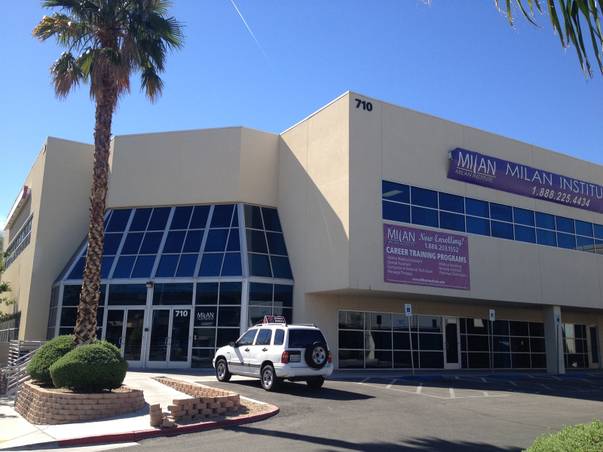For more
A few months after selling the Atomic Liquors building to Downtown Project, the bar’s bosses have plunked down a few million for an office building in a tax-deferral deal.
Atomic co-owner Lance Johns recently bought a two-story, foreclosed office building across the street from University Medical Center for $3 million. The sale closed Sept. 26, property records show.
The 20,226-square-foot building, 710 S. Tonopah Drive, is fully occupied by the Milan Institute, which offers training in cosmetology, massage therapy and dental and medical assistance, among other things.
Johns bought the property from Minneapolis-based U.S. Bank, which foreclosed last year.
He confirmed that he bought it as part of a so-called 1031 exchange. He also said he is the building's majority owner, and that his brother and business partner Kent Johns has a small stake.
When investors profit from the sale of a business or an investment property, they normally have to pay taxes on that gain at the time of sale. But the Internal Revenue Service, under Section 1031, lets investors postpone — but not avoid — those payments if they soon reinvest the proceeds in a similar property.
The Johns brothers booked a big profit on the Atomic deal. They and partner Derek Stonebarger bought the downtown tavern at 917 Fremont St. for just $500,000 in June 2013. They sold the bar’s building, but not the business, to Zappos CEO Tony Hsieh’s redevelopment enterprise in July this year for $3.48 million. They now rent the property from Hsieh’s group.
Although 1031 exchanges require similar properties to be bought and sold, the bar and the office property have almost nothing in common.
The Atomic, built in 1946, is the oldest standing bar in Las Vegas. In the Cold War years, when the U.S. government was testing atomic bombs northwest of Las Vegas at the Nevada Test Site, patrons sat on the roof to watch the explosions' mushroom clouds.
It’s a popular watering hole these days and has been featured on the CNN food and travel show “Parts Unknown” with Anthony Bourdain.
The office building, meanwhile, was built in 2006 and is home to a beauty and medical-services school.
However, both are commercial properties with paying tenants, and the IRS’ definition of “similar” seems fairly loose.
In a 1031 exchange, the properties must be similar enough to qualify as “like-kind,” according to the agency. Like-kind property is of the same nature, character or class, but “quality or grade does not matter,” the IRS says online.
“Most real estate will be like-kind to other real estate,” the agency says. “For example, real property that is improved with a residential rental house is like-kind to vacant land.”
After the first property is sold, the seller has 45 days to find a possible acquisition to complete the exchange. It must be purchased within 180 days.
When that property is sold — and if it’s not part of another 1031 exchange — the investors’ profits from the deals are taxed.

Atomic Liquors co-owner Lance Johns bought an office building near University Medical Center for $3 million in late September. The building is pictured above on Wednesday, Oct. 15, 2014. Photo by: Eli Segall
